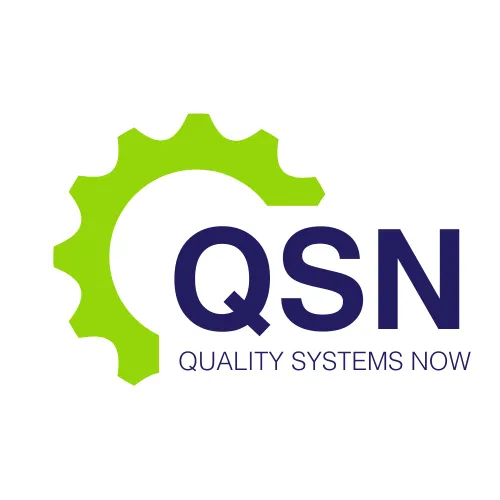LATEST NEWS

Staying Compliant for Life - Stay Audit Ready
Whether you are a pharmaceutical manufacturer, biotechnology company, or contract testing laboratory, remaining compliant with Good Manufacturing Practice (GMP) and other regulatory standards is a critical determinant of product quality, patient safety, and business viability. For companies within the life sciences sector, regulatory scrutiny is constant, and unannounced inspections are common. Consequently, the concept of being “audit ready” at all times has evolved from an ideal into an operational necessity. This article examines the strategies, scientific principles, and systemic frameworks necessary to maintain perpetual compliance and remain audit ready.
At Quality Systems Now, we help companies maintain Compliance for Life
The Scientific Basis for Regulatory Compliance
At its core, GMP is grounded in scientific principles that ensure the consistent production of quality products. These include validation, risk management, data integrity, and documentation. Regulatory frameworks such as the PIC/S GMP Guide, EU GMPs, and FDA 21 CFR Parts 210 and 211 are not merely bureaucratic hurdles; they are evidence-based systems designed to mitigate the risk of harm to end-users.
For example, process validation ensures that a manufacturing process consistently produces products meeting predetermined quality attributes. Similarly, cleanroom classifications, environmental monitoring, and sterility assurance are underpinned by microbiological principles aimed at reducing contamination risk. Scientific rigor in implementing and maintaining these systems is indispensable. Any deviation, no matter how small, must be scientifically justified, documented, and corrected to prevent recurrence.
Continuous Compliance Versus Event-Driven Compliance
Many organisations mistakenly adopt an event-driven approach to compliance, mobilising resources in preparation for scheduled audits or regulatory inspections. This reactive strategy is fraught with risks. Systems that are only partially maintained or updated ad hoc are more likely to exhibit non-conformances under the scrutiny of a regulatory authority.
By contrast, a continuous compliance model ensures that all systems, procedures, and documentation are kept up to date at all times. This approach aligns with the “quality by design” (QbD) paradigm and the lifecycle approach to validation recommended by the FDA and EMA. Continuous compliance minimises risk, improves data integrity, and fosters a quality-focused culture.
Key Components of an Audit-Ready Quality Management System
To be audit ready at all times, companies must embed audit readiness into the architecture of their Quality Management System (QMS). This includes the following components:
1. Document Control
Controlled documentation forms the backbone of GMP compliance. All policies, standard operating procedures (SOPs), work instructions, and records must be version-controlled, current, and easily retrievable. An effective document management system reduces the risk of procedural deviation and ensures staff always have access to the correct instructions.
2. Change Control
The change control process ensures that all proposed changes to facilities, utilities, equipment, processes, or documentation are assessed for their impact on product quality. Scientifically evaluating the potential risks and implementing controls accordingly is essential to maintaining a validated state. A strong change control system also demonstrates to regulators that changes are managed proactively and responsibly.
3. Deviation and CAPA Management
No system is perfect, and deviations are inevitable. However, what differentiates a compliant organisation is its ability to respond systematically. Deviation management must be prompt, with thorough root cause analysis and scientifically justified corrective and preventive actions (CAPAs). Effective CAPA management demonstrates control, traceability, and a culture of continuous improvement.
4. Training and Competency
Human error remains a significant source of GMP failures. Therefore, all personnel must receive initial and ongoing GMP training relevant to their roles. Competency assessments, training records, and periodic refreshers ensure that staff maintain a current understanding of quality and regulatory expectations. Regulatory auditors frequently review training documentation to verify that individuals are qualified for their tasks.
5. Internal Audits
Internal audits are essential tools for assessing the effectiveness of the QMS. They must be performed by trained personnel using objective criteria. Findings should be documented, categorised by risk, and tracked to closure. A well-executed internal audit program provides early warning of potential non-compliances and drives continuous improvement.
6. Data Integrity
Data integrity is a foundational requirement under GMP. All data—whether paper-based or electronic—must be attributable, legible, contemporaneous, original, and accurate (ALCOA). Companies must implement technical and procedural controls to prevent data falsification, loss, or manipulation. Audit trails, restricted access, and regular data reviews are essential to demonstrating data reliability.
7. Supplier and Contract Management
GMP responsibility extends beyond the organisation to its suppliers and service providers. Qualified suppliers, quality agreements, and regular performance reviews are vital for ensuring outsourced activities meet regulatory expectations. Supplier audits and risk-based assessments also form part of audit readiness, ensuring transparency and compliance across the supply chain.
The Role of Technology in Maintaining Audit Readiness
Digital transformation offers significant advantages in compliance management. Electronic QMS platforms can automate document control, training, deviations, and CAPA workflows. These systems facilitate real-time tracking, automatic reminders, and audit trails, all of which support audit readiness. However, companies must validate electronic systems per regulatory requirements (e.g., FDA 21 CFR Part 11 and Annex 11).
Moreover, the integration of quality risk management (QRM) tools enables organisations to identify and mitigate compliance risks proactively. Digital dashboards and key performance indicators (KPIs) offer visibility into system health and support data-driven decision-making.
Cultural Commitment to Compliance
Even the most robust systems will fail in the absence of a culture that values compliance. Senior management must lead by example, reinforcing the importance of quality and integrity. Staff should be encouraged to report deviations, raise concerns, and participate in continuous improvement initiatives without fear of reprisal. A culture of accountability and scientific thinking fosters a resilient organisation that is always prepared for inspection.
Preparing for Inspections: Simulation and Readiness Drills
Regular inspection readiness drills or mock audits are invaluable. These exercises simulate real inspection conditions, identify gaps, and improve staff confidence. Companies should maintain an inspection readiness plan that includes logistical arrangements, communication protocols, and documentation retrieval strategies. Designated inspection coordinators and trained subject matter experts (SMEs) should be prepared to support any regulatory audit.
Find out more about our Compliance for Life solutions
For manufacturers, laboratories, and biotechnology firms in the life sciences industry, staying compliant for life means embedding regulatory expectations into every layer of the organisation. Compliance is not merely a set of procedures—it is a scientific, operational, and cultural commitment. By maintaining a strong Quality Management System, investing in staff competence, leveraging technology, and promoting a culture of accountability, companies can ensure they are always audit ready.
At Quality Systems Now, we support therapeutic goods manufacturers, laboratories, and biotech companies in establishing systems that go beyond regulatory minimums. We help organisations achieve lasting compliance through practical, science-based strategies that withstand the scrutiny of global regulators. Staying compliant for life is not a challenge—it is a discipline. Stay ready, stay trusted.
